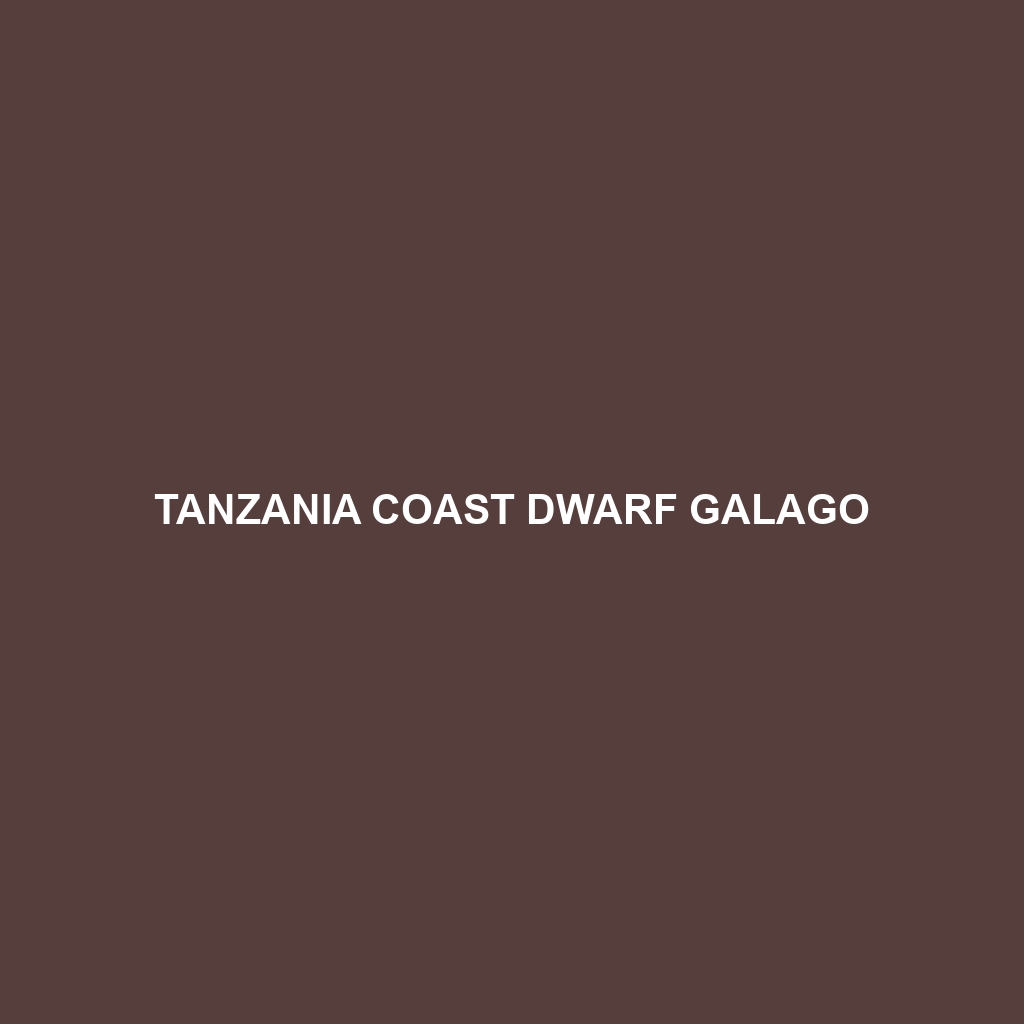Tanzania Coast Dwarf Galago
Common Name: Tanzania Coast Dwarf Galago
Scientific Name: Galago moholi
Habitat: The Tanzania Coast Dwarf Galago, also known as the bushbaby, is primarily found in the coastal forests of Tanzania. This species inhabits tropical rainforests, woodlands, and dense shrubland along the eastern coast of the African continent. These environments provide essential cover and foraging opportunities, making them ideal for the survival of this small primate.
Physical Characteristics: The Tanzania Coast Dwarf Galago is a small nocturnal primate, measuring about 20-25 cm (8-10 inches) in length, excluding its long tail, which can be as long as the body itself. Its fur is typically a gray-brown color, with lighter underparts and a distinctive facial mask that enhances its large, bright eyes. Characteristic features include large ears adapted for excellent hearing, which are crucial for its nighttime activities. The species is agile, with long limbs suited for climbing and leaping between trees.
Behavior: This species is known for its nocturnal habits, actively foraging for food during the night. They are social creatures, often forming small family groups. The Tanzania Coast Dwarf Galago is recognized for its unique vocalizations, which serve as communication tools to maintain contact within groups or to signal alarms. They exhibit impressive leaping abilities, capable of jumping several meters in a single bound to navigate their forest habitat.
Diet: The diet of the Tanzania Coast Dwarf Galago primarily consists of fruits, insects, and small vertebrates. These primates have a particular fondness for ripe fruits, which play a crucial role in their nutritional intake. They are also known to consume tree gum, making them important contributors to the dispersal of seeds within their ecosystem.
Reproduction: The breeding season for the Tanzania Coast Dwarf Galago typically peaks during the rainy months when food resources are abundant. Females usually give birth to one or two offspring after a gestation period of about 120 days. Mothers are highly attentive, carrying their young on their backs and teaching them essential survival skills in their rich habitat.
Conservation Status: The Tanzania Coast Dwarf Galago is currently classified as ‘Vulnerable’ by the International Union for Conservation of Nature (IUCN). Threats such as habitat destruction due to logging, agricultural expansion, and human encroachment significantly impact their populations. Conservation efforts are critical to ensure the survival of this unique species.
Interesting Facts: One fascinating aspect of the Tanzania Coast Dwarf Galago is its incredibly sharp sense of hearing, which allows it to detect predators and locate food sources effectively. Additionally, their large eyes not only enhance vision in low light but also give them a distinctive, adorable appearance that captivates wildlife enthusiasts.
Role in Ecosystem: The Tanzania Coast Dwarf Galago plays a crucial role in maintaining the health of its forest ecosystem. By aiding in seed dispersal and insect control, they contribute to the biodiversity of their habitat. Their unique behaviors and dietary habits also help balance the ecosystem, promoting healthy plant growth and supporting other wildlife species.
